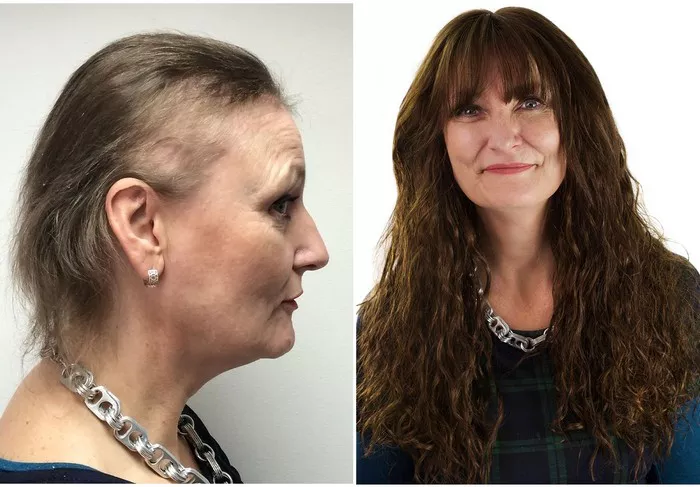Hair transplantation is often hailed as a transformative solution for individuals experiencing hair loss. While the procedure can yield remarkable results for many, some may find themselves continuing to battle balding even after undergoing a hair transplant. In this article, we explore the various factors that may contribute to ongoing hair loss post-transplant and discuss potential strategies to address this persistent challenge.
Understanding the Complexity of Hair Loss
Hair loss is a multifaceted condition influenced by genetics, hormonal changes, age, and lifestyle factors. A hair transplant aims to redistribute healthy hair follicles from one part of the scalp to areas experiencing hair thinning or baldness. However, it is important to recognize that a hair transplant does not halt the progression of natural hair loss, and individuals may continue to lose native hair over time.
Factors Contributing to Ongoing Hair Loss
Several factors can contribute to persistent hair loss after a hair transplant. Understanding these factors is crucial for developing realistic expectations and exploring additional interventions if necessary.
Genetic Predisposition: If hair loss is primarily due to genetic factors, a hair transplant may not provide a permanent solution. The transplanted hair follicles are often resistant to the effects of genetic hair loss, but the native hair surrounding the transplanted area may still be susceptible.
Progression of Androgenetic Alopecia: Androgenetic alopecia, commonly known as male or female pattern baldness, is the most common cause of hair loss. It is a progressive condition, and a hair transplant does not alter the underlying genetic factors that drive this process. As a result, individuals may experience continued hair loss in areas unaffected by the transplant.
Hormonal Changes: Hormonal fluctuations, such as those associated with aging or certain medical conditions, can contribute to ongoing hair loss. Postmenopausal women, for example, may continue to experience hair thinning despite undergoing a hair transplant.
Poor Graft Survival: In some cases, the success of a hair transplant may be influenced by the survival and growth of the transplanted grafts. If grafts do not integrate well with the recipient site or if there is poor blood supply, the transplanted hair may not thrive, leading to suboptimal results.
Insufficient Donor Hair: The availability of an adequate donor hair supply is crucial for a successful hair transplant. If there is limited donor hair, the transplant may not achieve the desired level of coverage, and ongoing hair loss may become more apparent.
See Also: [Reveal!] The Survival Rates of NeoGraft Hair Transplantation
Exploring Additional Interventions
For individuals experiencing persistent hair loss post-transplant, there are several additional interventions that can be considered to complement the results of the transplant:
Medical Therapies: FDA-approved medications such as minoxidil and finasteride can be prescribed to slow down or even partially reverse hair loss. These medications are often used in conjunction with a hair transplant to maintain the health of existing native hair.
PRP (Platelet-Rich Plasma) Therapy: PRP therapy involves injecting a concentrated form of the patient’s own blood into the scalp to stimulate hair growth. This non-surgical approach can be beneficial in promoting hair density and enhancing the results of a hair transplant.
Lifestyle Modifications: Adopting a healthy lifestyle that includes a balanced diet, regular exercise, and stress management can contribute to overall well-being, potentially influencing the health of the hair.
Consultation with a Hair Restoration Specialist: If persistent hair loss is a concern, seeking the expertise of a hair restoration specialist is paramount. A professional can assess the specific factors contributing to ongoing hair loss and tailor a personalized treatment plan.
Managing Expectations and Realistic Goals
It is essential for individuals who have undergone a hair transplant to manage their expectations and recognize that the procedure is not a cure for all types of hair loss. While a transplant can significantly improve the appearance of thinning or balding areas, it may not prevent further hair loss in untreated regions.
Regular follow-up consultations with the transplant surgeon or a hair restoration specialist can provide valuable insights into the progress of the transplant and guide individuals on potential interventions to address ongoing hair loss.
In conclusion
Persistent hair loss after a hair transplant is a complex challenge that may have various contributing factors. Understanding the nature of hair loss, exploring additional interventions, and maintaining realistic expectations are crucial aspects of managing this ongoing journey. With a comprehensive approach and guidance from professionals, individuals can navigate the complexities of hair loss and make informed decisions to achieve the best possible outcomes.


